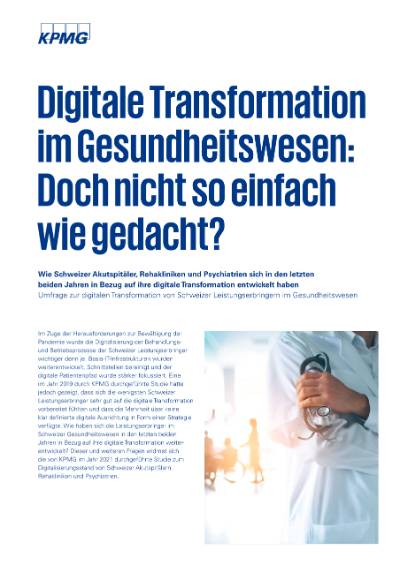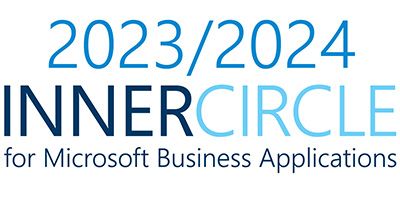Auf dem heutigen Markt prägen technologische Innovationen die Art und Weise, wie Unternehmen arbeiten. Der Wandel ist konstant und Weiterentwicklungen werden schnell zur Norm. Wenn es um Technologie geht, kann der richtige Einsatz einen nachhaltigen Vorteil gegenüber Ihrer Konkurrenz bedeuten - und wir bei KPMG haben die Mittel, die Erfahrung und die Beratung, um Sie dabei zu unterstützen, durch Microsoft-Technologien greifbare Ergebnisse zu erzielen.
Wir sind mehr als ein Business-Integrator und fokussieren uns auf die Wertschöpfung während des gesamten Transformationslebenszyklus und nicht ausschliesslich auf die Technologieimplementierung. Dies wird durch unsere führenden Praktiken zusammen mit unserer funktionalen Transformationslösung KPMG Powered Enterprise erreicht. Wir fokussieren auf maximale Kundenwertschöpfung, indem wir in Kombination exzellentes Businesswissen, durchoptimierte softwarebasierte Hochleistungsprozesse sowie technische und organisatorische Integration anbieten. Unser talentiertes und diverses Team kombiniert tiefgreifende Geschäftskenntnisse mit umfangreichen technischen Fähigkeiten um Technologielösungen zu entwickeln, die Ihr Unternehmen voran bringen.
Microsoft Dynamics 365
Microsoft Dynamics 365 bietet eine komplette Suite von Business-Software wie ERP und Sales & Marketing, basierend auf der Cloud. Diese Suite verfügt über eine breite Palette an durchdachten und intelligenten Geschäftsanwendungen, die nahtlos zusammenarbeiten. Sie transformiert administrative und primäre Geschäftsprozesse, bereichert Kundenbeziehungen oder professionalisiert das Talentmanagement. Zudem profitiert Microsoft Dynamics 365 von der Anbindung an die Cloud: immer aktuell, sicher, angenehm flexibel und skalierbar.
Dynamics 365 ist eine leistungsstarke Lösung um:
- Altsysteme abzulösen
- Geschäftsprozesse zu standardisieren und zu automatisieren
- Enger zusammenzuarbeiten
- Umfangreiche Erkenntnisse aus Kundendaten zu gewinnen
- Backoffice-Kosten zu reduzieren
KPMG Powered Supply Chain ermöglicht durch Microsoft-Technologie
Im Rahmen einer offenen, flexiblen, auf Zusammenarbeit ausgerichteten und sicheren Supply-Chain-Plattform helfen Ihnen unsere Microsoft-Supply-Chain-Experten, eine widerstandsfähigere und nachhaltigere Lieferkette zu realisieren. Dabei setzen wir führende digitale Lösungen und Tools von Microsoft ein.
Die Schwerpunkte sind:
- Chancen und Risiken verstehen. Unsere Nachhaltigkeitsbewertung der Lieferkette ermöglicht es Ihnen, die Risiken in Ihrer Lieferkette zu ermitteln, zu überwachen und zu steuern - und gleichzeitig die damit verbundenen Chancen zu nutzen.
- Beschleunigen Sie Ihr Vorhaben zur Dekarbonisierung der Lieferkette. Wir unterstützen Sie dabei, Emissions-Hotspots innerhalb Ihrer Lieferkette zu ermitteln. Das versetzt Sie in die Lage, die vorrangigen Massnahmen zur Dekarbonisierung festzulegen. Zudem unterstützen wir Sie gerne dabei, auch Ihre Lieferanten zum Handeln zu motivieren.
KPMG Powered Supply Chain auf Basis von Microsoft Dynamics 365 bietet ein bewährtes Zielbetriebsmodell, das die wirksamsten Arbeitsmethoden für die Zukunft aufzeigt. Dabei werden sechs Schlüsselebenen eines optimierten Lieferkettenmodells berücksichtigt:
- Prozess: Gestaltung Ihrer Lieferkettenfunktion
- Mitarbeitende: Neudefinition der Zuständigkeiten
- Technologie: Unterstützung und Automatisierung der Arbeitsabläufe
- Dienstleistungserbringung: Festlegung des Leistungsumfangs und Erfüllungsorts
- Leistungseinblicke und -daten: Optimierung der Entscheidungsfindung
- Governance: Überwachung der Prozesse und Kontrollen
Die Gesellschaften von KPMG helfen Ihnen, eine präzise Vision dafür zu erarbeiten, wie Sie Ihre Supply-Chain-Funktion zum Erfolg führen können. Wir unterstützen Sie auf dem Weg dorthin - mit bewährten Methoden, die exakt auf Ihr Unternehmen zugeschnitten werden.
KPMG Powered Human Resources ermöglicht durch Microsoft-Technologie
In den vergangenen Jahren hat die Nachfrage nach Dienstleistungen im Bereich des Personalwesens (HR) zugenommen, und HR-Fachleute stehen vor zahlreichen Herausforderungen, wie dem Wettbewerb um Talente, der Komplexität der Verwaltung einer vielfältigen und globalen Belegschaft sowie der Notwendigkeit, die Einhaltung von Vorschriften sicherzustellen. Darüber hinaus verwenden viele Personalabteilungen noch veraltete Technologien.
Um Unternehmen bei der Bewältigung dieser Herausforderungen zu unterstützen, hat sich KPMG Powered HR als transformative Lösung erwiesen:
- Wie können wir dazu beitragen, die Belegschaft zu transformieren?
- Wie können wir Technologie und Prozesse nutzen, um eine kulturorientierte Arbeitsumgebung zu schaffen?
- Wie können wir mit den Mitarbeitern in den "wichtigen Momenten" in Kontakt treten und ihre Erfahrungen verändern?
- Wie können wir Daten und Erkenntnisse nutzen, um das Personalmanagement zu verbessern?
- Wie können wir die Effizienz der HR-Prozesse kontinuierlich steigern?
Gestalten Sie Ihre Belegschaft für die Zukunft mit KPMG Powered Enterprise HR
Werden Sie eine transformative Führungskraft in der HR-Organisation der Zukunft
In Zusammenarbeit mit HR-Teams weltweit haben KPMG-Mitgliedsfirmen Powered HR implementiert, um die Transformation zu beschleunigen, Mehrwert zu schaffen und Kosten zu reduzieren. Powered HR ist ein bewährtes Betriebsmodell, das auf unserer Expertise, Best Practices und einem vorgefertigten Satz von Assets aufbaut, der auf führenden Technologielösungen von Drittanbietern basiert. Es bietet eine Plattform, die es der HR ermöglicht, einen höheren Mehrwert zu schaffen, indem sie strategische, auf die Mitarbeiter ausgerichtete Initiativen unterstützt und die betriebliche Effizienz in jeder Hinsicht kontinuierlich verbessert.
Powered HR bietet Ihnen folgende Vorteile:
- Verbesserte Effizienz durch Automatisierung
- Präzise Stimmungsanalyse durch qualitative Umfragen
- Verbesserte Mitarbeiterbindung als Grundlage für positive Kundenerfahrungen
- Steigerung der Umsätze durch befähigte Mitarbeiter
Unser Fachwissen umfasst
Bei KPMG Schweiz arbeiten wir mit international anerkannten Experten wie Ana Inés Urrutia de Souza zusammen. Ana ist eine Expertin für Dynamics 365 Human Resources und Microsoft für Human Resources. Sie ist Microsoft MVP und eine führende Persönlichkeit bei der Implementierung und Nutzung dieser Technologien im HR-Bereich.
Ana ist eine gefragte Rednerin und Mentorin, bekannt für ihre Förderung einer integrativen Gemeinschaft im Bereich HR und Technologie. Durch ihre Kombination aus technischem Sachverstand, Führungskompetenz und Community-Aufbau hat sie sich als einflussreiche Persönlichkeit im Bereich der digitalen Transformation etabliert.
Weitere Informationen zu ihrer Arbeit finden Sie auf der Webseite Most Valuable Professional - Microsoft.
Microsoft im Gesundheitswesen
Die Möglichkeiten zur Digitalisierung im Gesundheitswesen steigen rasant an. Immer mehr Schweizer Spitäler setzen auf Telemedizin, Patientenportale und eine digitale Unterstützung bei Diagnosen und Behandlungsprozessen. Damit verbunden steigt jedoch auch die Komplexität der eigenen digitalen Transformation, insbesondere auch bezüglich der damit einhergehenden Schnittstellen zu Patienten, der Belegschaft aber auch zu vor- und nachgelagerten Leistungserbringern. KPMG kann Sie dabei unterstützen, Ihre strategische Ausrichtung umfassend zu definieren und Ihre digitale Transformation strukturiert anzustossen und kosteneffizient zu verfolgen.
Wir bieten basierend auf Microsoft Technologie zahlreiche Anwendungsfälle für Spitäler in der Schweiz an. Beginnend in der Zusammenarbeit im Spital, der Analyse operativer Kennzahlen, sowie der optimierten Ressourcenzuteilung stellen wir Spitälern komfortabel bedienbare Lösungen zur Verfügung.
Für die Begleitung des Patienten von der Aufnahme bis zur Entlassung und Nachversorgung stellen wir Omni-Channel-Kommunikation durch moderne mobile Applikationen für eine 360 Grad-Patientensicht her. Das Spitalpersonal sowie die Angehörigen können somit noch intensiver die individuelle Patientenhistorie verfolgen. Unser Ziel ist, durch geringe Pflegekosten, das Einarbeiten von Pflegetrends sowie die Automatisierung manueller Abläufe die Pflegekoordination zu optimieren. Wir können uns dabei individuell auf die Bedürfnisse einzelner Spitäler einstellen und passende Applikationen bereitstellen.
Warum KPMG?
KPMG ist ein globales Full-Service-Netzwerk von Mitgliedsunternehmen, das Geschäfts- und Technologieintegration mit einer robusten und wachsenden Anzahl von Beratern mit Microsoft Erfahrung anbietet. Gemeinsam geben Ihnen die Teams von KPMG und Microsoft die Freiheit, Ihr Geschäft in Ihrem eigenen Tempo zu transformieren und dabei Risiken, Kosten und Stress zu reduzieren.










